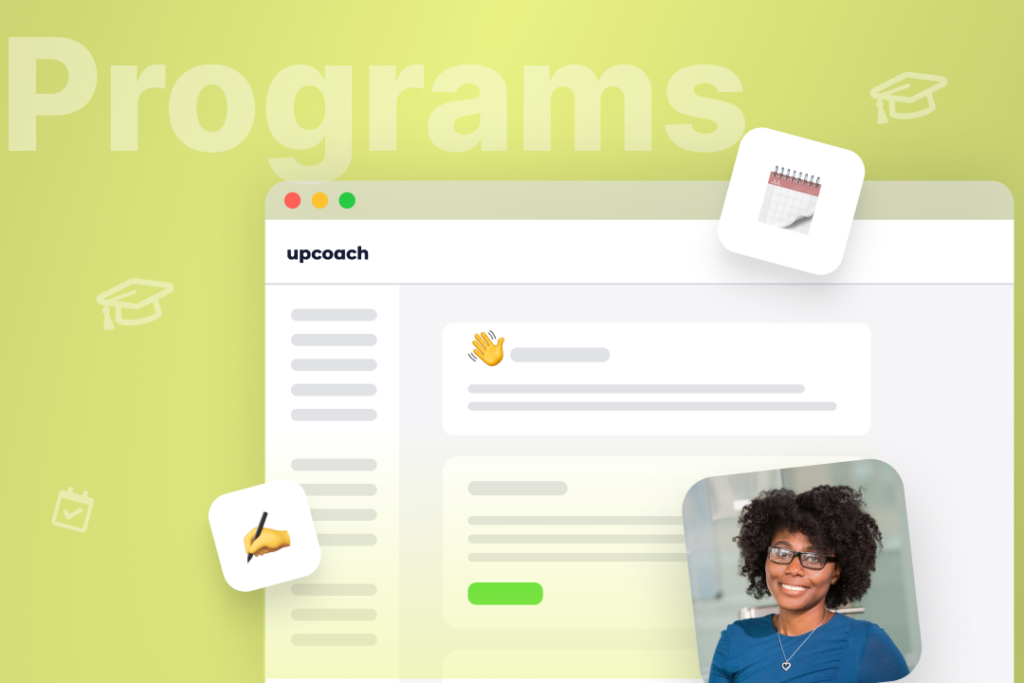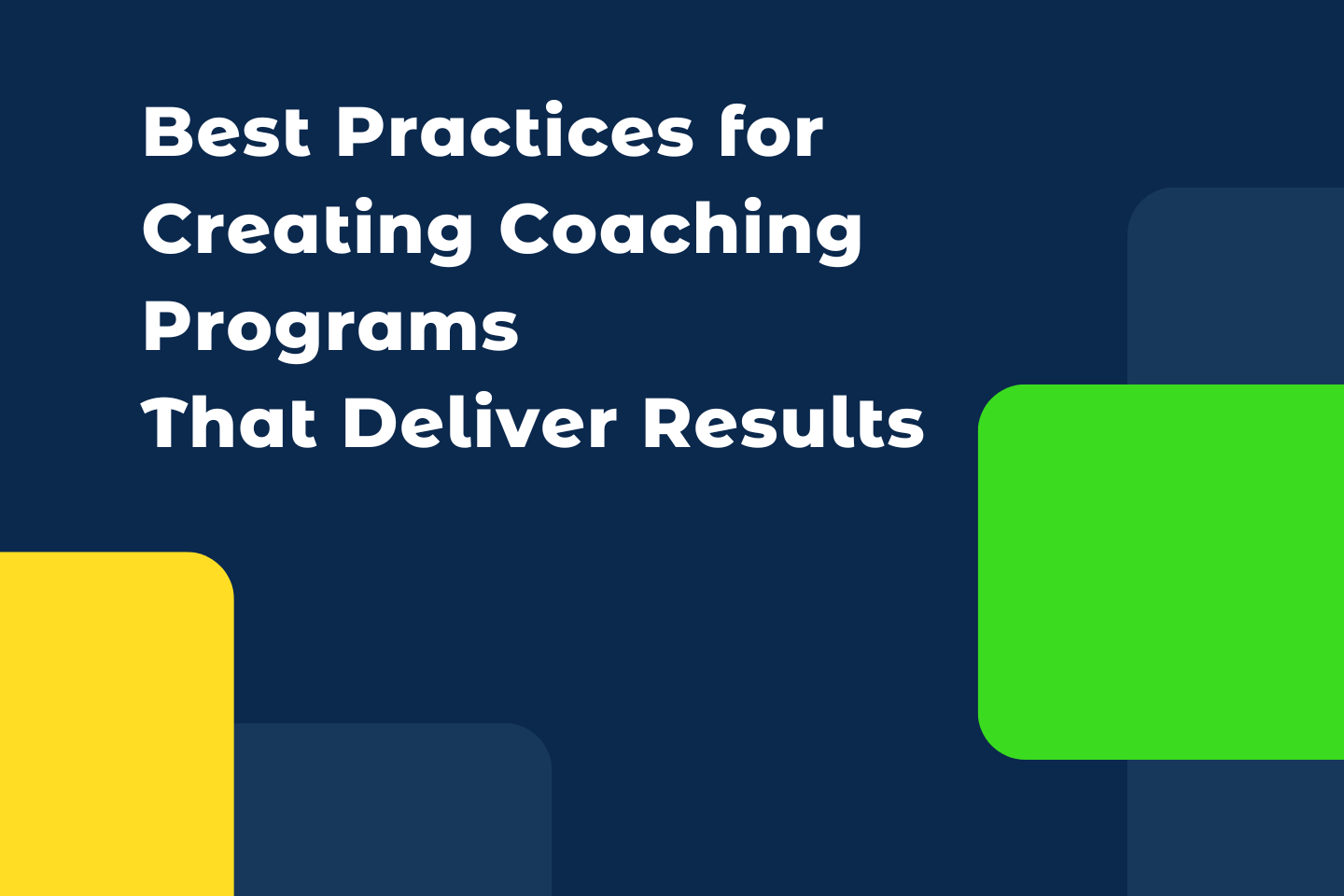Creating a coaching program that genuinely delivers requires a combination of well-established best practices and your own creativity. While the latter is up to you, we will help you go over the basics that always work.
Prepare to explore the essential components of a successful coaching program: understanding your audience, ensuring your program’s uniqueness, and implementing effective coaching techniques.
These key elements will help you learn how to build a coaching program that not only meets but exceeds client expectations, fostering engagement and satisfaction.
1. Understanding Your Target Audience

Knowing your audience is one of the most important things for any successful business, and coaching is no exception. Understanding your target audience is the first step in crafting a coaching program that delivers results.
Let’s explore this concept further.
How to Structure a Structure Program The Right Way: Analyzing Demographic and Psychographic Traits
To better understand your target audience, you need to examine their demographic and psychographic traits.
Demographic characteristics include:
- Age
- Gender
- Occupation
- Income level
- Education level
- Geographic location
These traits help to create a clear picture of your potential clients, ensuring that your strategies are tailored to help your clients succeed.
However, there’s more to it. Psychographic traits such as values, interests, and motivations are equally important.
These traits help you to understand your clients on a deeper, human level. This will in turn allow you to create a coaching program that resonates with their beliefs and needs.
Conducting Market Research
Once you pinpoint the demographic and psychographic traits of your target audience, you can then shift your focus to another pivotal element: market research. Market research involves analyzing competitors and engaging with your target audience to understand their needs.
Surveys, focus groups, and direct feedback are excellent ways to gather insights about your target audience. The feedback gathered can help you identify market gaps and tailor your coaching program to meet the unfulfilled needs of your clients. After all, a successful coaching program is one that resonates with its audience and fulfills their needs.
2. How to Create a Coaching Program That is Unique to Your Offerings

Having established a solid foundation by understanding your audience, you can now transition to the subsequent phase: designing your distinctive coaching program. Your coaching program should be unique, reflecting your expertise and standing out in the market.
The framework of your coaching program should facilitate growth and development in the client’s desired area. It begins with understanding the client’s desired outcome and working backward to outline the program content.
Each component of the program should be essential, contributing to the overall client experience and moving them closer to their goals.
Competitor Analysis
You may be contemplating, “How can I make my coaching program stand apart?” A comprehensive competitor analysis is one method to achieve this. By understanding the services, pricing, and approaches of your competitors, you can identify unique elements to incorporate into your coaching program.
Understanding the pricing strategies utilized in the coaching industry is another crucial aspect of competitor analysis. As you gain experience and build your client base, you may adjust your rates to match or even exceed your job income, potentially leading to higher prices over time.
Core Offer Focus
Focusing on one core offer in your coaching program has several benefits:
- It ensures clarity and effectiveness in your program.
- It simplifies the program content, focusing on the most impactful aspects.
- It helps prevent client overwhelm.
Incorporating premium features and robust support systems can enhance the effectiveness of your coaching program. They can provide additional value and support for your clients. These elements can significantly enhance the client experience, making your coaching program more appealing and attractive to potential clients.
3. Structuring Your Coaching Program

So, you’ve understood your audience, analyzed your competitors, and crafted your signature coaching program. What’s next? It’s time to establish the program structure. A well-structured program guides the client to their goals, with clear milestones and action plans.
Let’s examine the process in more detail.
Session Length and Frequency
When it comes to session length, balance is key. Each session should be long enough to cover the material but short enough to maintain the attention and engagement of both the coach and the client. A session length of 45 to 90 minutes is generally recommended.
The number of sessions and their frequency also play a critical role in structuring your coaching program. More complex topics may require longer sessions or a series of shorter sessions. Ultimately, the session length and frequency should be tailored to the client’s preferences and the program goals.
Goals and Milestones
Goals and milestones provide a roadmap for your coaching program. By setting clear, specific, measurable, achievable, relevant, and timely (SMART) goals, you can track progress and assess the success of your coaching program.
Each coaching session should have its own milestone that supports the overall goal. This way, you can ensure that each session is purposeful and contributes to the client’s progress towards their desired outcome.
Remember, the journey of a thousand miles begins with a single step—or in this case, a single coaching session on their coaching journey.
Selecting Effective Coaching Tools and Techniques
As a coach, you need the appropriate tools and techniques for an efficient coaching program. Let’s delve into some of the most popular tools and techniques that can enrich your coaching program.
Coaching Methodologies
Coaching methodologies are techniques or approaches used in coaching. These methodologies can be tailored to specific coaching approaches and client needs.
For starters, familiarize yourself with different coaching styles such as directive coaching, non-directive coaching, cognitive-behavioral coaching, and solution-focused coaching.
For example, humanistic coaching focuses on fostering personal growth and self-actualization, while cognitive coaching addresses maladaptive thoughts and unproductive perceptions.
The key is to choose methodologies that align with your style and brand, as they offer unique benefits tailored to specific coaching approaches.
Resources and Support Materials
In addition to coaching methodologies, resources and support materials are integral to an effective coaching program. These materials can help streamline your program delivery and enhance your coaching effectiveness.
For example, using a coaching program template can provide structure for sharing educational content. Coaching program templates, checklists, worksheets, and guides can all be used to ensure that your program content aligns with the unique needs of each client.
Industry Standards and Pricing
Understanding industry standards and pricing is crucial when setting your coaching fees. Life coaching hourly rates typically vary from $75 to $250, and monthly fees range from $500 for personal coaching to $1500 for executive coaching.
Taking industry standards into account, you can set competitive rates for your services. It’s also important to consider offering long-term coaching packages with incentives such as free initial consultations or discounts for advance payment on multiple sessions.
Tiered Packages
Speaking of packages, offering tiered packages is a great way to cater to a range of client needs and budgets. Such an approach provides flexible options that can accommodate different levels of investment.
A common approach in the coaching industry includes three levels: Standard, Professional, and Business packages. This makes it easier for clients to choose a level that’s comfortable for them.
Using the Right Platform

When choosing the right platform for coaching, upcoach stands out as angood option to consider, especially for those looking to streamline their coaching process and enhance client engagement.
The upcoach platform is a comprehensive solution that combines essential coaching tools in one integrated system, supporting both individual and group coaching efficiently.
Key Features of upcoach:
- Customizable coaching programs: upcoach allows coaches to easily create tailored programs using a drag-and-drop builder, enabling a personalized approach to coaching that can adapt to different client needs,
- Integrated CRM and client management: Keep all client information, progress tracking, and communications centralized, making it easier to manage and scale your client base without losing the personal touch.
- Community building and engagement: Features like community forums and chat enhance interaction among clients and between coach and client, fostering a supportive network that enhances the coaching experience.
- Automation tools: Automate administrative tasks such as scheduling and follow-ups, which helps in focusing more on coaching rather than on backend operations.
Benefits for coaches:
- Efficiency and time management: With features like task automation and integrated payment processing, coaches can save time and reduce administrative hassles.
- Scalability: Whether starting out or managing large groups, Upcoach’s scalable solutions cater to all levels of business needs with different pricing plans.
- Enhanced client engagement: Through interactive courses, habit tracking, and personalized coaching plans, clients remain engaged and motivated throughout their coaching journey.
Scaling and Growing Your Coaching Business
So you followed the best practices for creating coaching programs and came up with your very own signature coaching program, and now you might be wondering what comes next. The subsequent step is to expand and develop your coaching business.
Group coaching, self-guided online courses, and online group coaching programs are effective ways to scale your coaching business.
While group coaching allows you to coach multiple clients simultaneously, self-guided courses enable you to reach a wider audience and generate passive income. Utilizing online platforms can simplify the addition of self-guided coaching courses, facilitating the growth of your coaching business.
Conclusion
There you have it, the best practices for creating coaching programs, from understanding your target audience to crafting a signature coaching program, structuring it effectively, and scaling your coaching business, we’ve covered a lot of ground.
The journey of creating a coaching program that delivers results isn’t always easy, but with the right tools, techniques, and strategies, it’s absolutely achievable. So, go on, take the leap, and create that impactful coaching program you’ve always dreamed of!
